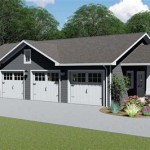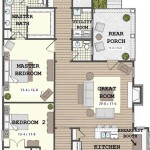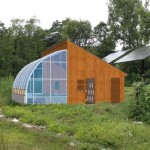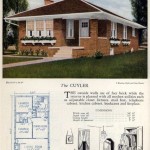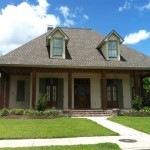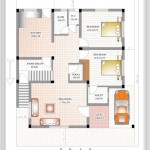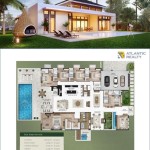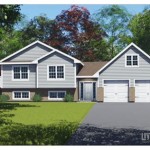House Plans for Sloping Lots
Building on a sloping lot presents unique challenges and opportunities. While it might seem daunting at first, a sloped terrain can offer breathtaking views and distinctive architectural possibilities. Careful planning and the right house plan are crucial for maximizing the benefits and mitigating the potential drawbacks of building on a slope.
Understanding the Slope
The first step in choosing a house plan for a sloping lot is understanding the site's specific characteristics. The severity of the slope, expressed as a percentage or ratio, dictates the foundation type and influences the overall design. A gentle slope might accommodate a slab-on-grade foundation with minimal modifications, while a steeper slope may require a crawlspace, basement, or stilt foundation. Soil composition also plays a significant role; stable soil is essential for supporting the structure and preventing erosion.
Walkout Basements: Maximizing Space and Light
Walkout basements are a popular choice for sloping lots as they allow for expanded living space that seamlessly integrates with the outdoors. These basements typically open onto a patio or backyard area, providing natural light and ventilation to what might otherwise be a dark, underutilized space. They can be designed to include additional bedrooms, recreational areas, or home offices, significantly increasing the home's usable square footage.
Split-Level Homes: Embracing the Terrain
Split-level homes are well-suited for sloping lots, utilizing the changing elevation to create distinct living zones. These homes typically feature staggered floors connected by short flights of stairs, offering a sense of privacy and separation between different areas of the house. This design can effectively minimize excavation and grading work, making it a cost-effective option for sloped terrains.
Multi-Level Decks and Patios: Extending Outdoor Living
Sloping lots offer excellent opportunities for creating dynamic outdoor living spaces. Multi-level decks and patios can follow the contours of the land, providing distinct areas for dining, lounging, and entertaining. These spaces can be connected by stairs or walkways, creating a seamless transition between the home and the surrounding landscape. Consider incorporating retaining walls to create level areas for seating and landscaping.
Driveway and Garage Considerations
Access to the property and garage placement require careful consideration on sloping lots. A steep driveway might necessitate a switchback design or a more gradual, winding approach. The garage can be positioned at the top, bottom, or side of the slope, depending on the lot's configuration and the desired aesthetic. Integrating the garage seamlessly with the house design is crucial for maintaining visual harmony.
Drainage and Erosion Control
Proper drainage is paramount when building on a slope. Effective drainage systems divert rainwater away from the foundation, preventing erosion and potential water damage. This might involve installing French drains, retaining walls, or swales to channel water runoff. Landscaping plays a vital role in erosion control; strategically planted vegetation can stabilize the soil and prevent runoff.
Working with an Architect: A Collaborative Approach
Designing a house for a sloping lot requires expertise and a deep understanding of the site's unique challenges. Working with an experienced architect is essential for developing a plan that maximizes the lot's potential while addressing practical considerations like drainage, stability, and accessibility. Architects can create custom designs or adapt existing plans to fit the specific contours of the land, ensuring that the final product is both functional and aesthetically pleasing.
Cost Considerations
Building on a sloping lot can sometimes incur higher costs compared to building on a flat lot. These additional expenses may stem from the need for specialized foundations, retaining walls, extensive excavation, and complex drainage systems. However, careful planning and collaboration with experienced professionals can help manage these costs effectively. Choosing the right house plan and construction methods can significantly impact the overall budget.
Views and Natural Light: Capitalizing on the Advantages
One of the primary benefits of building on a sloping lot is the potential for stunning views and abundant natural light. House plans should be designed to capitalize on these advantages, with strategically placed windows and outdoor living spaces that maximize exposure to the surrounding scenery. Consider the orientation of the house to optimize sunlight and capture the best views.

Plan 51696 Traditional Hillside Home With 1736 Sq Ft 3 Be

Looking For The Perfect Affordable Cottage With A Large Covered Balcony Plan 1143

Modern House Plan Sloping Lot Contemporary Style 5590 Vista

Sloping Lot Contemporary Style House Plan 1100 Sundown

Duplex For A Down Sloping Lot 8188lb Architectural Designs House Plans

Home Plan Ch507

A Guide To Sloping Lot House Plans

Plan 64452sc House For A Rear Sloping Lot Façade Maison Moderne Plans D étage Cottage Rustique

House Plan Stratford A Captivating Farmhouse For Sloped Lots Limaohio Com

House Plan Ch501

